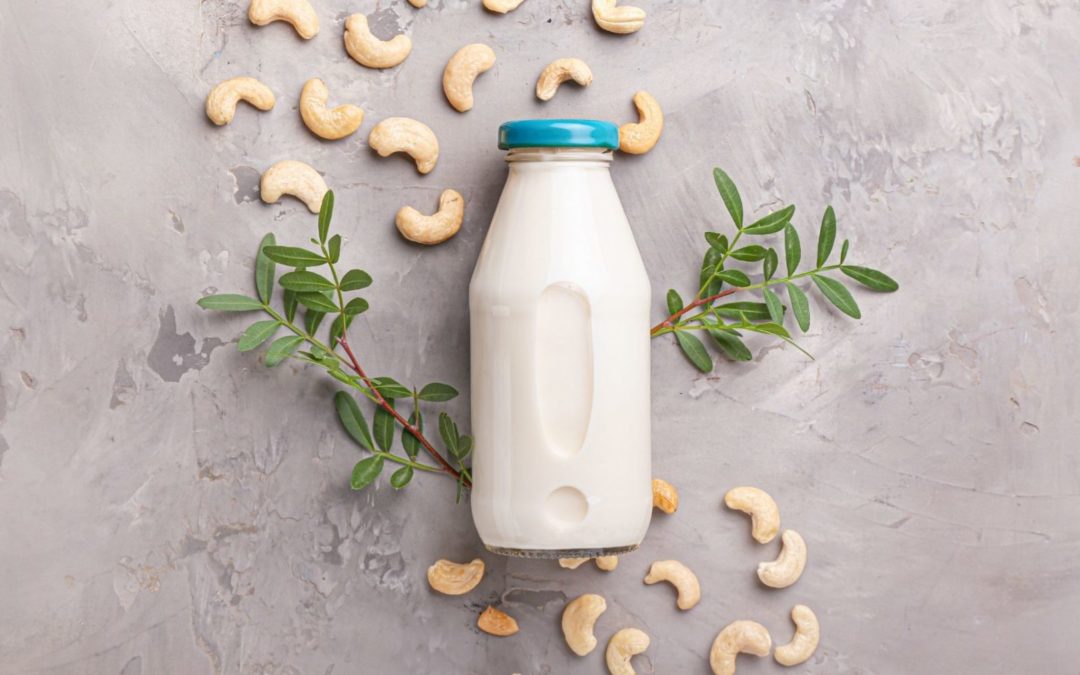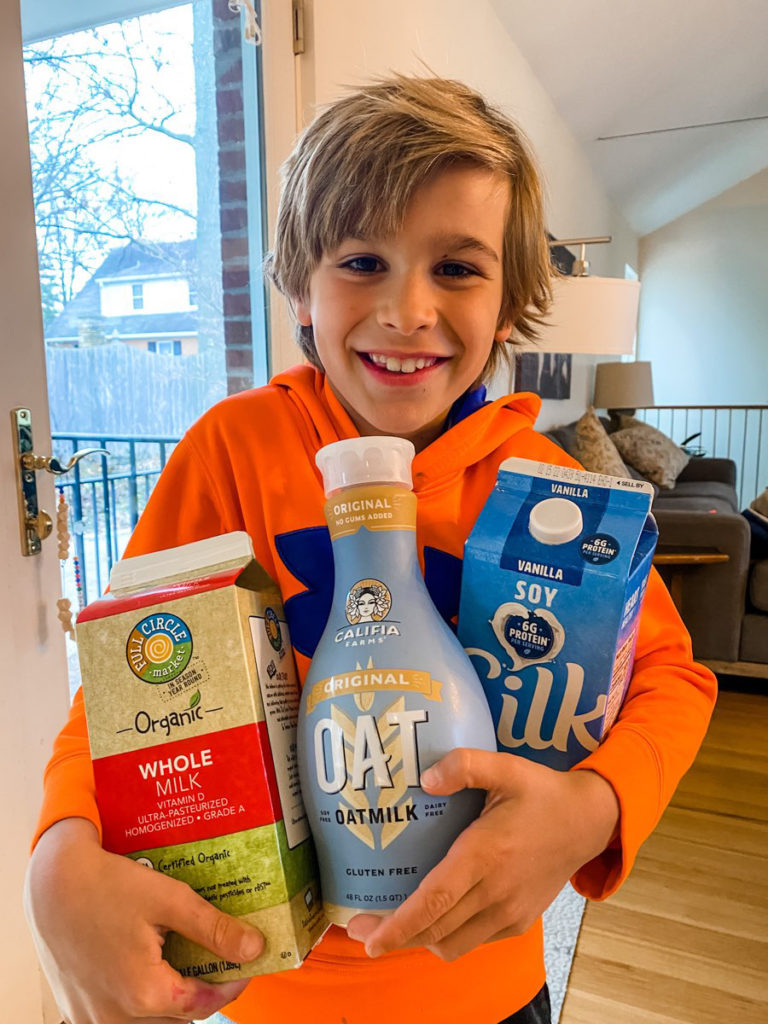How many milks are in your fridge? In my house, we usually have a trio of milks – whole milk for the kids, oat milk for my lattes, and soy milk for my husband’s coffee. With so many options today, our family is probably the norm!
But, do you ever find it confusing? We’re laying down the facts to help you choose what type of milk is best for you. The decision to drink plant-based milk alternatives versus dairy milk comes down to a personal choice. With the right information, it’s possible to enjoy dairy or plant-based milks while meeting your nutritional needs.
Dairy Milk Vs Plant-Based Milks
The Halo Effect
While we know that conventional dairy milk has so many nutritional benefits, such as being a good source of calcium, potassium, and vitamins like A and D, many people associate plant-based products with being “better” for them. This is also known as the “halo effect,” and is one of the reasons why plant-based milks have become so popular in the past few years.
Lactose Intolerance
Many people choose to drink plant-based milks due to flavor preferences or health beliefs, but, there is a large portion of the world’s population that literally cannot digest dairy milk due to its lactose content. Lactose intolerance is a condition caused by an inability to absorb lactose. Lactose intolerance causes symptoms such as diarrhea, abdominal pain, bloating, gases, etc. In a world where 68% of people experience lactose malabsorption, plant-based milks have shown to have a significant popularity and serve as a good option to still enjoy your latte in the morning or a bowl of cereal without the added symptoms.
Saturated Fat Content
Current evidence still recommends that we limit less healthy, saturated fat. Whole milk is high in saturated fat content (1 cup of whole milk has ~4.6 g of saturated fat. This is about 20% of the daily amount recommended by the 2015-2020 Dietary Guidelines for Americans. While saturated fat increases the risk of cardiovascular diseases, there are other nutrients in milk that seem to mitigate the risks. Beneficial ingredients in whole milk (such as protein, vitamin and mineral content, and it’s fat makeup) outweigh the risk caused by its saturated fat content. In a balanced diet, whole milk can be a great addition.
Types of Plant-Based Milks
Oat Milk

Oat milk has quickly gained its popularity for being the best milk for latte art out there for its sweet flavor and great frothing ability. Compared to other plant-based milks, oat milk has about 7 g of added sugar while regular dairy milk contains none. One cup of oat milk has less than 1 g of fiber, while a cup of oats contains 4 g of fiber. Chobani oat milk can be found at Whole Foods, Target, and other local grocery stores.
Soy Milk
This one’s a tricky one. Soy milk has had a bad rep in the past as a possible causing agent for breast cancer. However, most of the evidence showing that high isoflavones content in soy milk causes an increased estrogen production and therefore increases the risk of developing breast cancer has been found in rodents. Humans process soy differently than rodents; therefore, it is hard to assume that soy consumption is a potential cause for breast cancer. Furthermore, soy milk is also a good source of potassium and contains 7 g of protein per cup. Silk soy milk can be found at Whole Foods, Walmart, Target, and other local grocery stores.
Almond Milk
While almond milk is one of the most popular plant-based milks out there, it has taken a toll on the environment due to its high water and pesticide use. If you’re looking for ways to reduce the environmental impact while still enjoying your almond milk, try using this product to make your own version of Almond Breeze almond milk at home! If you are making your own almond milk, you can control the amount of water being used and ensure that no pesticides were added.
Hemp Milk
Hemp milk is another plant-based milk alternative currently on the market. It has 3 g of protein and 2 g of fiber per cup. However, hemp milk is a good source of unsaturated omega-3 fatty acids. There is little research out there that shows significant risks or benefits of drinking hemp milk.
Rice Milk
This plant-based milk is the highest carb-containing milk out there, with 27 g of carbohydrates per cup. It is more than twice the amount found in regular diary milk (12 g per cup). Rice milk also has ~12 g of added sugars, which is steep for a cup of milk. Rice Dream rice milk is a good option out on the market currently.
Coconut Milk
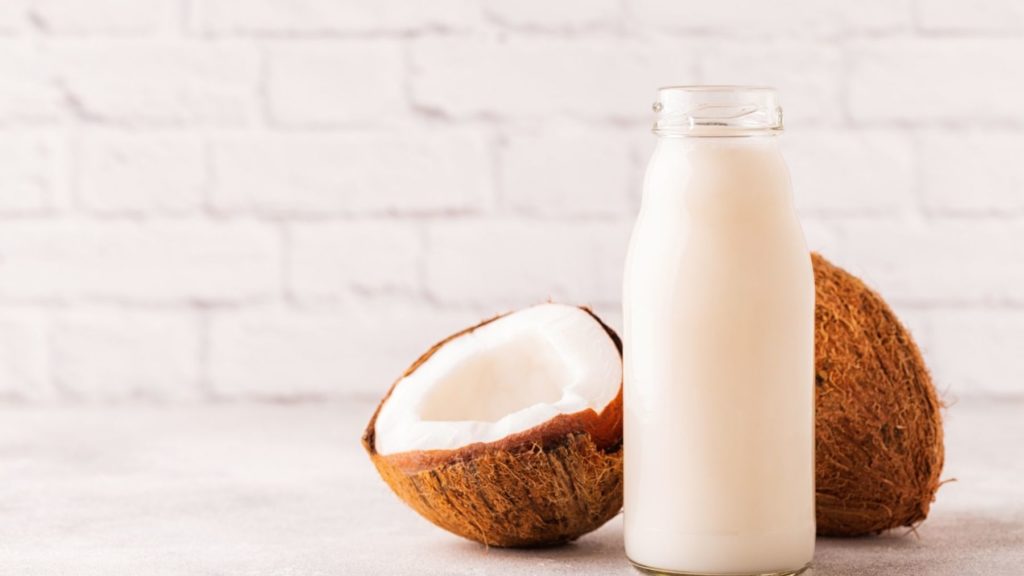
There are many types of coconut milk out there. There’s the traditional canned coconut milk that tends to make silky and smooth dishes such as coconut soup, curry, etc. Coconut milk beverages tend to be a bit more smooth and take on more of the consistency of dairy milk. This type of milk is great for coffees, cereal, smoothies, etc. Coconut milk, however, is naturally higher in fat and more calorie dense.
Macadamia Nut Milk
Macadamias are a natural source of monounsaturated fatty acids such as omega 3 and omega 6. This plant-based milk is very low in carbohydrates (<1 g of carbohydrates per cup). Milkademia is a popular brand you can find online or at your local Walmart or Target.
Cashew Milk
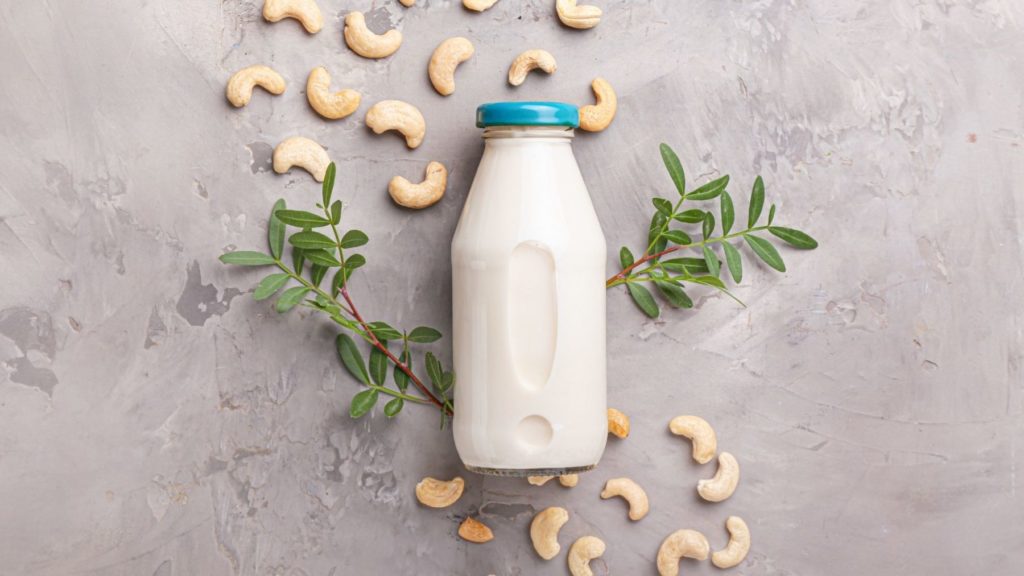
Cashews are rich in vitamins and minerals such as magnesium, vitamin K, and iron. Silk Cashew Milk is a great cashew milk option. With its nuttier, sweeter taste, it’s a good option for smoothies, coffee, tea, or with your morning oatmeal or cereal.
Check out this plant-based milk comparison chart we created below. This chart serves as a summary of the nutritional differences between each plant-based milk.
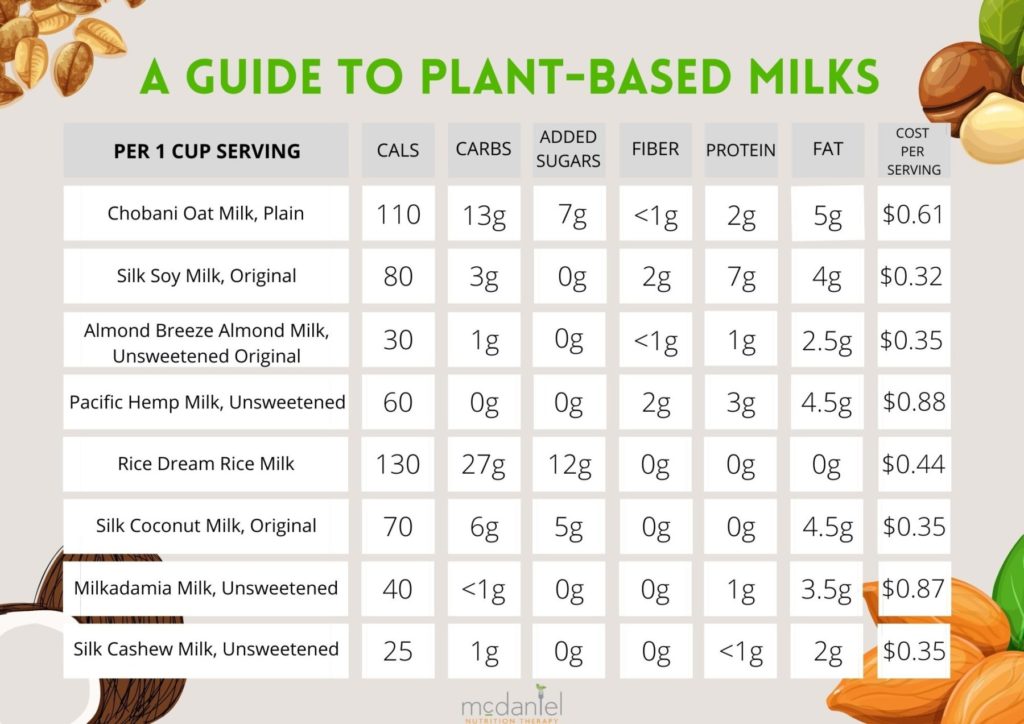
Whether you’re looking to change up your milk game, or trying to find a plant-based milk alternative, we hope we’ve provided more insight for you to make an informed decision.

